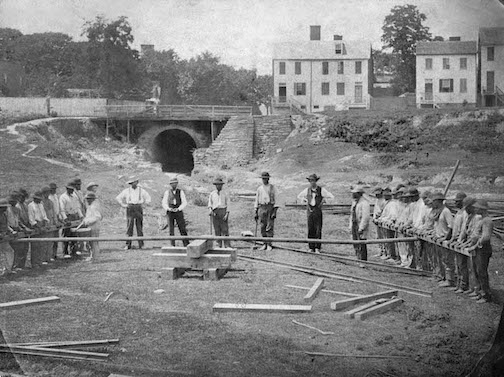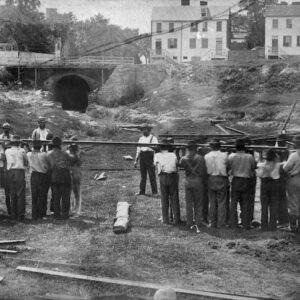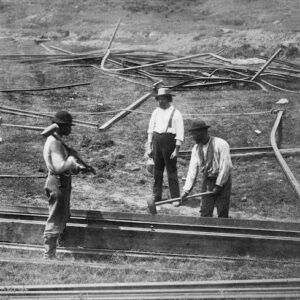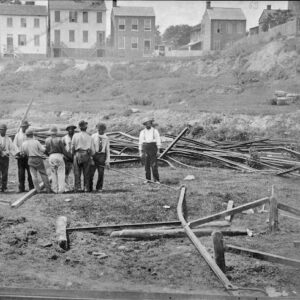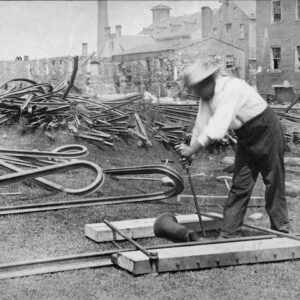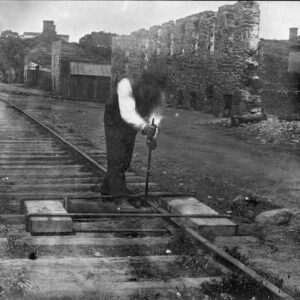| Credit: | by Russell (Andrew J.) |
|---|---|
| Date: | 1863.03-04 |
| Negative Size: | 6.5 in. x 8.5 in. |
| Equipment: | rail; sledgehammer |
| Locations & Lines: | Alexandria VA; Orange & Alexandria Railroad (O&A); Virginia |
| Military Units: | US Military Railroads (USMRR); US Army |
| Structures & Establishments: | Wilkes Street Tunnel (Alexandria VA) |
| Sources: | Boston Athenaeum; J. Paul Getty Museum; Library of Congress |
$5.99
File Details: AAENm, 600 DPI, TIFF, Original Photograph, 17.6 Mb
Image ID: AAEN
Haupt, United States Military Railway Department. Construction And Transportation. No. 63.
Haupt, Photographs Illustrative of Operations In Construction And Transportation, As Used To Facilitate The Movements Of The Armies Of The Rappahannock, Of Virginia, And Of The Potomac, Including Experiments Made To Determine The Most Practical and Expeditious Modes To Be Resorted To In The Construction, Destruction and Reconstruction Of Roads And Bridges. No. 63–No. 63 exhibits a very rapid, effective and portable contrivance for straightening rails, which I used on the Hagerstown Road. It consisted of five block of wood, each about ten inches square and five feet long, placed as shown in picture. The top block was notched slightly, to receive the base of the rail and cause it to lie with the plane of the base vertical. Two pieces of scatling, 3 x 4 or 4 x 4, were placed across the ends. Twelve of sixteen men at each end would press down or relieve the pressure, at the words of command, “down,” “up.” The rail was moved forward or back at the word of command, or turned. After a very short drill the intelligent contrabands, who furnished the motive power, were able to straighten a rail in an average of from two to three minutes sufficiently near a straight line to permit it to be laid in the track, and so nearly straight that a continuance of the operation would not generally result in any improvement. The rail after this operation could be laid in the track and spiked; it would be so nearly straight that trains could be run over it safely; but a short bend would always remain, which could be removed by the jack-screw apparatus after it was in the track.
After finishing the rails within a convenient distance, the blocks were carried forward to the next pile.
By distributing the gangs, several miles of rails could be straightened in a day.

